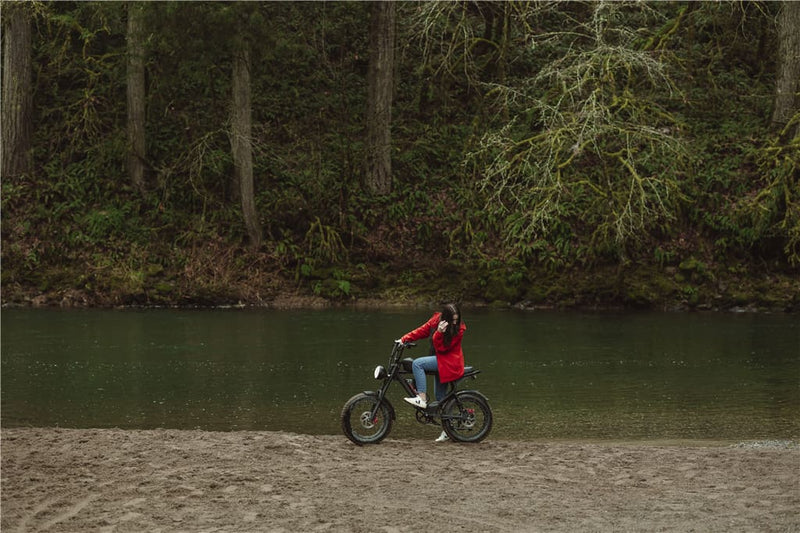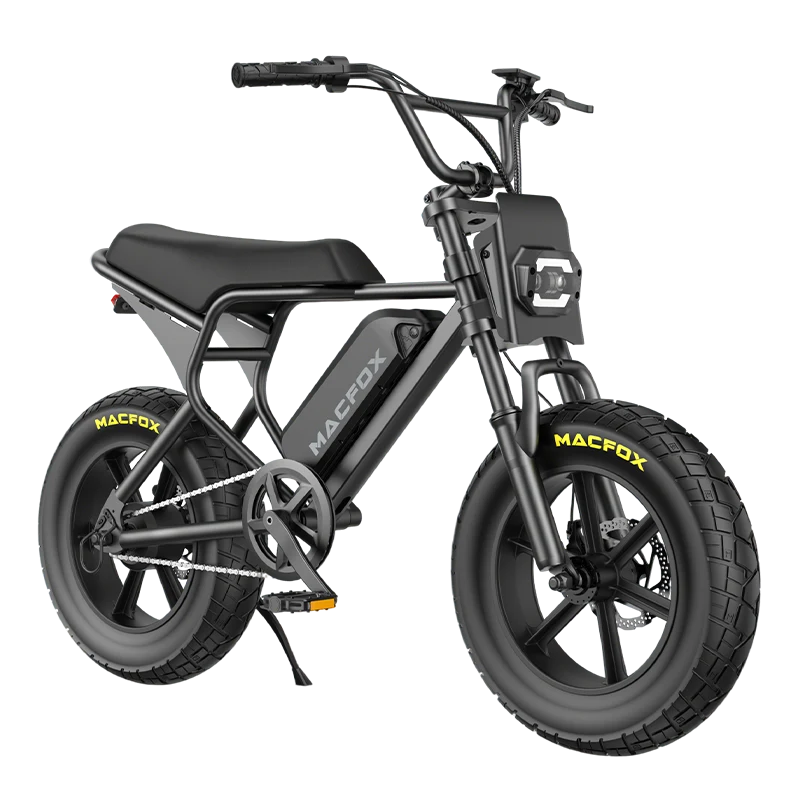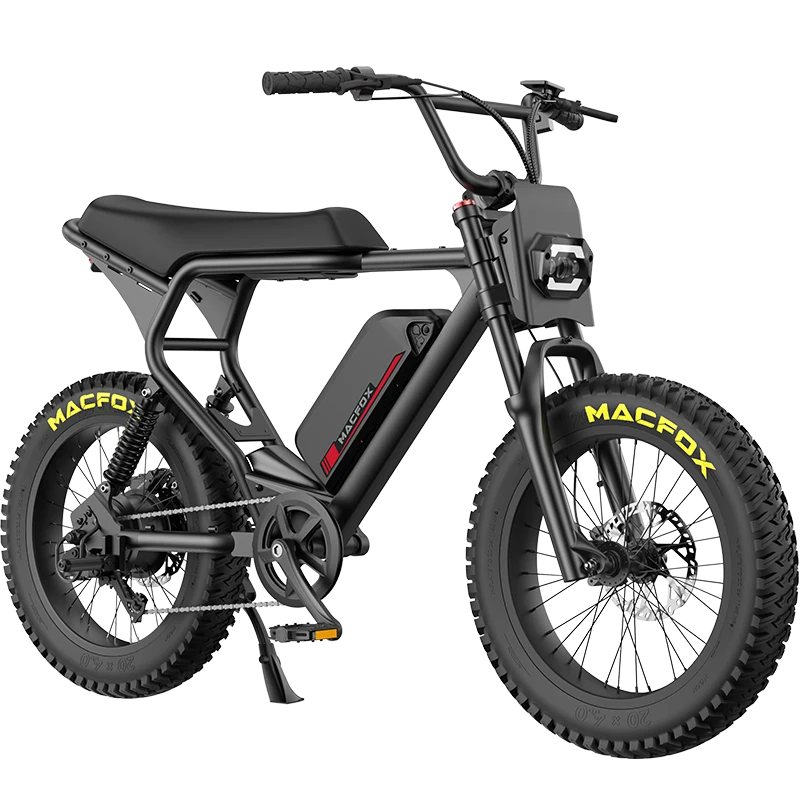Have you ever gone through a situation while driving your e-bike where the battery is significantly low?
This happens sometimes with a lot of people when they get carried away in their tasks and forget to charge their batteries.
Many people had to experience standing in the middle of somewhere stranded because their e-bike battery ran out.
Therefore, it is important for people to completely understand the battery requirements and capacity of their e-bike to make sure that they don’t travel those extra miles and regret it later.
Demystifying E-bike Range
An e-bike range is the total number of kilometers or miles a bike can run before its battery is completely drained.
Usually, almost all e-bikes have an integrated display that displays the traveling or traveled range in kilometers or miles.
The batteries on e-bikes are measured in kilowatt-hours KWh. A basic electric bike can go around 100 Kilometers per single charge or 110.
Manufacturers of these bikes test the battery range in ideal conditions and this can deviate a little when experiencing real-world scenarios.
However, this can be affected by the weather conditions. As you may know, batteries tend to perform slightly poorer in colder climate conditions. Therefore, this aspect minimizes the maximum distance you can travel with your e-bike.

Calculating Your Real-World Range
While manufacturers provide estimated range figures, your actual mileage may vary significantly. Here's a simple way to calculate your realistic range:
Base Range × Weather Factor × Terrain Factor × Weight Factor = Expected Range
- Weather Factor: Warm (1.0), Cool (0.8), Cold (0.6)
- Terrain Factor: Flat (1.0), Rolling Hills (0.7), Mountainous (0.5)
- Weight Factor: Under capacity (1.0), Near capacity (0.8), At capacity (0.7)
Factors Affecting E-bike Range
Battery Capacity
The battery capacity is a determining factor that affects the overall distance your bike can travel. Measured in ampere-hours (Ah) or watt-hours (Wh), the battery capacity indicates how much energy it can store.
For example, a 48V 10.4Ah battery has a capacity of approximately 500Wh (48V × 10.4Ah = 499.2Wh). The higher the capacity, the more energy your bike can store, typically resulting in longer range.
Motor Power
Motor power, measured in watts (W), indicates how much power the motor can deliver. While higher-powered motors (like 750W vs 500W) can provide more assistance and better hill-climbing ability, they also consume more energy from the battery when operating at full power. For example:
- A 500W motor operating at full power will drain a 500Wh battery in about 1 hour of continuous use
- The same battery might last 2-3 hours when the motor is used at lower power levels
- Higher-powered motors are ideal for hilly terrain but may reduce range compared to lower-powered motors on flat ground
Related Reading: Macfox Electric Bike Takes You to Enjoy Nature
Rider Weight and Terrain
One of the external factors affecting the mileage of your electric bikes is the rider's weight. Luckily, most electric bike manufacturers provide a weight limit specifically mentioned to avoid unfamiliar circumstances. That being said, an ideal weight limit must be utmost 330lbs.
Coming to the terrain, yes it is also another factor heavily contributing to the performance of your e-bike’s batteries. To keep it precise, any external force or interference that makes it harder for you to peddle your bike affects your bike’s battery life as well. This is because the motors of your bike have to do more work which leads to more battery being utilized.
Emergency Preparedness
Never get caught off guard again with these essential preparations:
Emergency Kit Essentials:
- Portable battery pack (compatible with your e-bike)
- Basic tool kit for quick repairs
- Phone with offline maps downloaded
- Local bike shop contacts saved
- Emergency contact numbers
Battery Care and Maintenance
Your battery's longevity depends greatly on how you care for it. Proper maintenance can extend both your range per charge and overall battery life. Follow these essential care tips:
Always store your battery at around 40-80% charge when not in use for extended periods. Full discharges can significantly reduce battery life. Keep it in a cool, dry place - ideally between 50-77°F (10-25°C).
Develop a regular charging routine. It's better to top up frequently than to regularly drain the battery completely. Think of it like your phone - small, regular charges are better than deep discharges.
Smart Route Planning
Modern technology has made route planning more efficient than ever. Use apps like Google Maps or specialized e-bike apps to:
- Find the most energy-efficient routes
- Locate charging stations along your route
- Track elevation changes
- Monitor weather conditions
Remember to account for headwinds and temperature when planning longer rides. A route that's easy on a calm day can drain your battery quickly when fighting strong winds.
Seasonal Riding Strategies

Summer Riding
Hot weather can actually improve battery performance, but be careful of extreme heat. Avoid leaving your bike in direct sunlight for extended periods. Your range might increase by up to 15% in warm weather compared to winter conditions.
Winter Riding
Cold weather can significantly impact your battery life. Expect about 30-40% less range in near-freezing conditions. Store your battery indoors and consider installing a neoprene battery cover for extra protection during winter rides.
Professional Maintenance Schedule
Regular maintenance isn't just about the battery - it's about the entire system working efficiently. Schedule professional check-ups:
- Every 500 miles or 3 months for regular riders
- Check tire pressure weekly
- Clean and lubricate the chain monthly
- Full system diagnostic every 2000 miles
Choosing Battery Capacity Based on Commuting Distance
One of the most crucial decisions when selecting an e-bike is choosing the right battery capacity for your commuting needs. A common mistake is either overpaying for unnecessary capacity or choosing a battery that's too small for your regular trips.
Understanding Your Daily Range Needs
To calculate your ideal battery capacity, use this simple formula:
Daily commute distance × 1.5 = Minimum range needed
The 1.5 multiplier accounts for:
- Unexpected detours
- Battery degradation over time
- Varying weather conditions
- Future route changes
Related Reading: How Far Is Too Far to Go to Work by Bike? [commuting Advice]
Battery Configurations and Real-World Examples
Let's take the Macfox X1S Commuter Ebike as an example of how manufacturers are addressing different commuting needs. This versatile e-bike comes with:
- A 500W geared hub motor (peak 750W)
- 48V 10.4Ah battery with optional dual battery configuration
- Top speed of 25 mph
- Range options:
- Single battery: 38 miles
- Dual batteries: 76 miles
This dual-battery option perfectly illustrates the flexibility modern e-bikes offer. For instance:
- Short-distance commuters (under 15 miles round trip) can use the single battery configuration, keeping the bike lighter and more manageable
- Long-distance commuters can opt for the dual battery setup, ensuring sufficient range for extended commutes up to 35 miles each way
- Weekend warriors can switch between configurations based on their planned activities
For most urban commuters, a single battery providing 30-40 miles of range (like the Macfox X1S's standard configuration) is sufficient. However, if your daily commute exceeds 15 miles each way, or if you frequently ride in hilly terrain, considering a dual-battery setup like the Macfox X1S's extended range option might be worthwhile.
Macfox X1S
$9,99.00 – $1,398.00Riding Style and Assist Modes
This is a no-brainer but how fast you ride will impact your batteries as well. To give you a fair comparison: a combustion engine-based bike is recommended to be driven at most 37 miles per hour for the best fuel economy the machine can give as compared to electric bikes, where a more optimum speed would be 20 miles per hour.
Let’s discuss some of the power options available for e-bikes:
250W BIKES
These types of bikes are strictly urban bikes. Meaning they are designed to be functional on the well-paved roads. If you have an office within a minimum distance or you are just looking to take it through your local park, then it is advised that you go with the 250W bikes. Keep in mind that these bikes are not suitable for off-roading.
750W BIKES
This is a type of bike that is ideal for types of usages. This means that they can be taken for an off-roading adventure if handled with care and batteries are fully charged. An electric bike 750w has good mileage if you are looking to move on a slightly to no inclined surface. These can sometimes also be a lot demanding in terms of charging as their higher wattage means more power but also more battery consumed.
1000W BIKES
These bikes are a powerhouse in terms of power. Therefore they are highly recommended for tough terrains. If you have a good budget, it is recommended to buy a 1000W bike. This is because it ticks all the requirements that are important for an electric bike. This includes things like power, mileage, comfort, and suspension. Generally, when you are paying for more Watts, you are also getting a ton of extra features.
Maximizing Your E-bike Range: Top Tips
Electric bikes are a fantastic way to explore further and experience the thrill of riding with a little less effort. But maximizing your e-bike's range can mean the difference between an epic adventure and a short-lived outing. Here are some top tips to help you squeeze every last drop of juice from your battery:
- Embrace Pedal Assist:Don't rely solely on the throttle. The pedal-assist system is there for a reason! It supplements your pedaling effort, extending your range and giving your legs a break.
- Mind Your Speed:While e-bikes can reach impressive speeds, resist the urge to constantly go full throttle. Maintaining a moderate, steady pace is more energy-efficient.
- Shift Gears Wisely: Just like a traditional bike, using the appropriate gear for the terrain helps optimize power usage. Don't struggle uphill in a high gear, and avoid spinning out on flat stretches.
- Plan Your Route: Consider factors like elevation changes and headwinds when planning your ride. Opt for flatter routes or utilize alternative routes that minimize climbing.
- Tire Care: Proper tire inflation is crucial. Underinflated tires create rolling resistance, sapping your battery life. Check your tire pressure regularly and inflate them to the manufacturer's recommended PSI.
Conclusion
Electric bikes open up a world of possibilities for exploration and fun. But with that freedom comes the responsibility of managing your battery life. No one wants to get stranded on the trail with a depleted battery!
The good news is, with a few simple adjustments to your riding style and some smart planning, you can significantly extend your e-bike's range. Remember, it's all about efficiency – using the right amount of power to get you where you want to go.



















